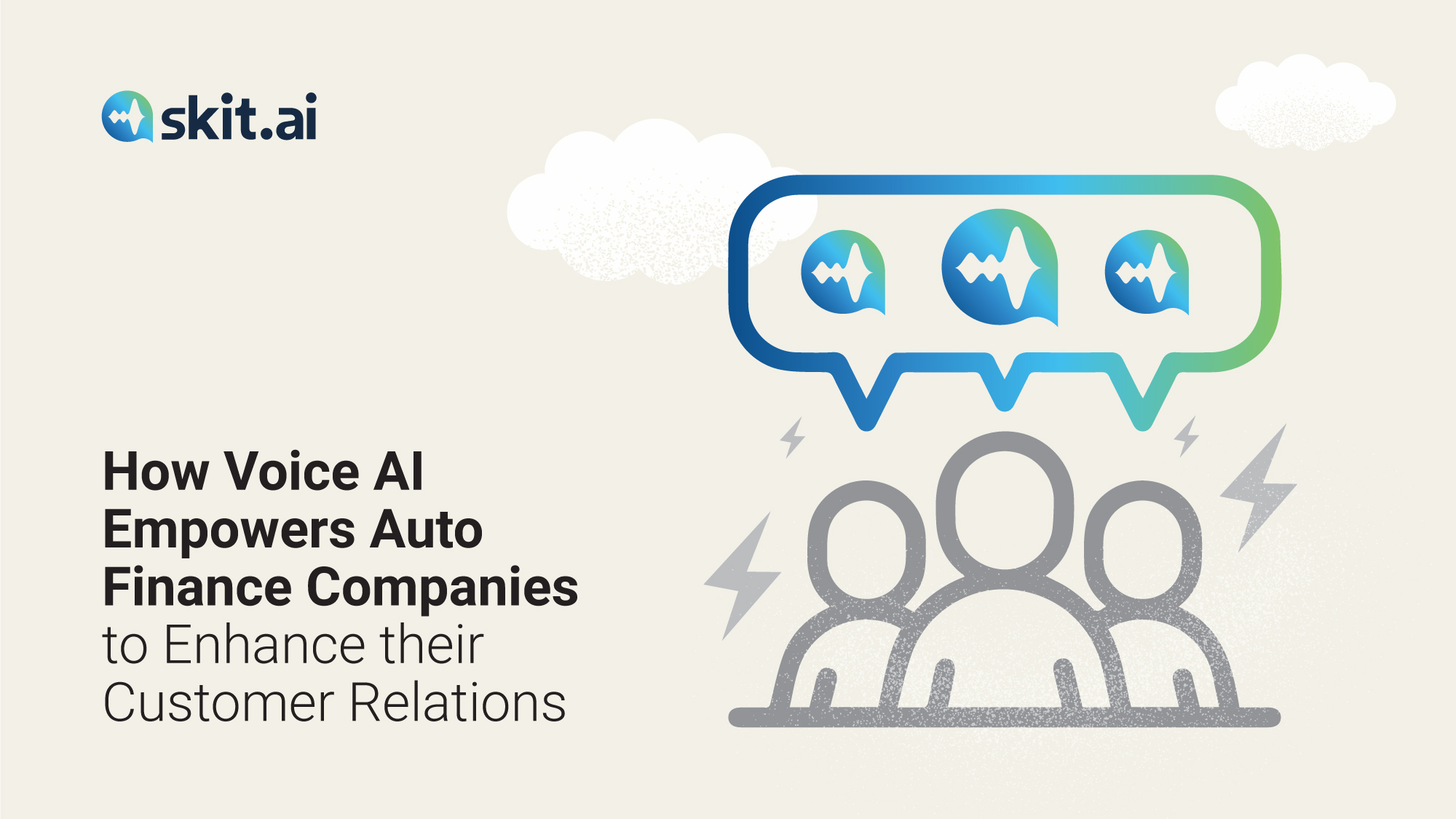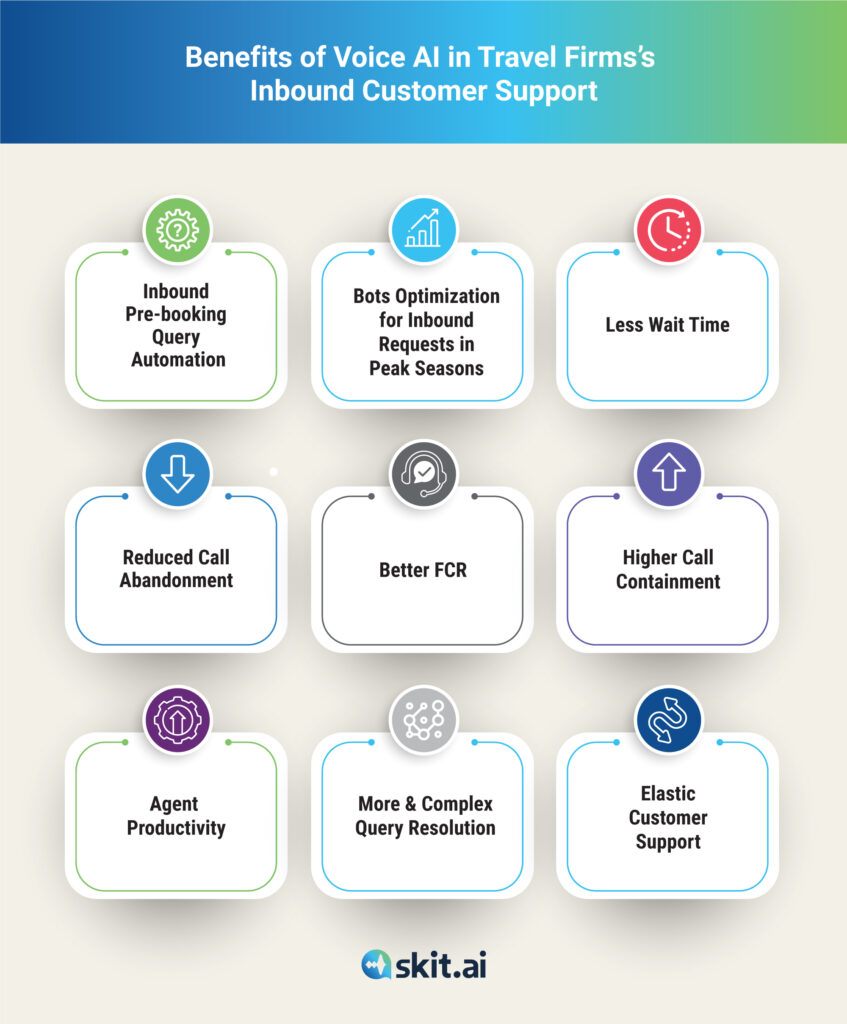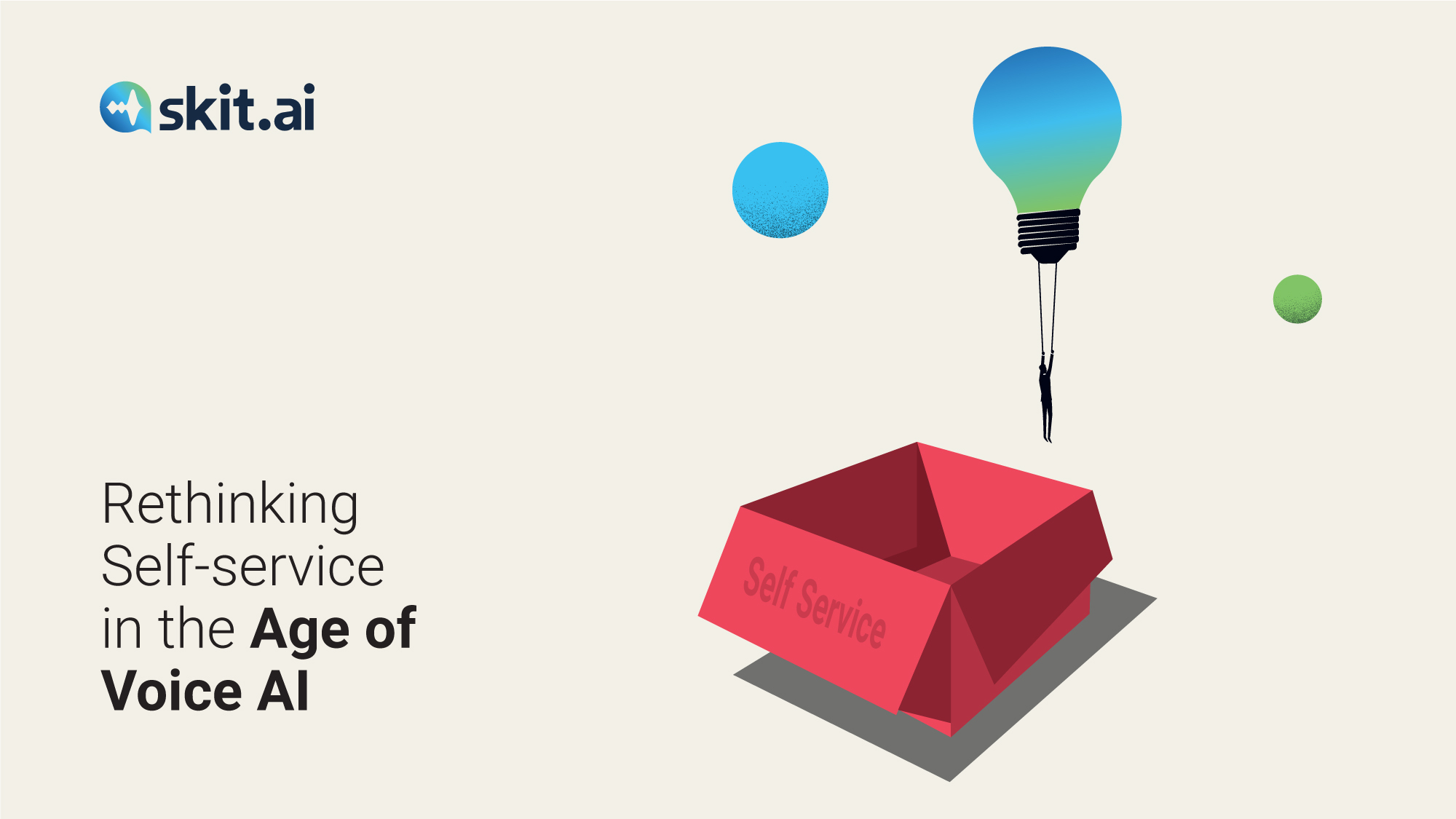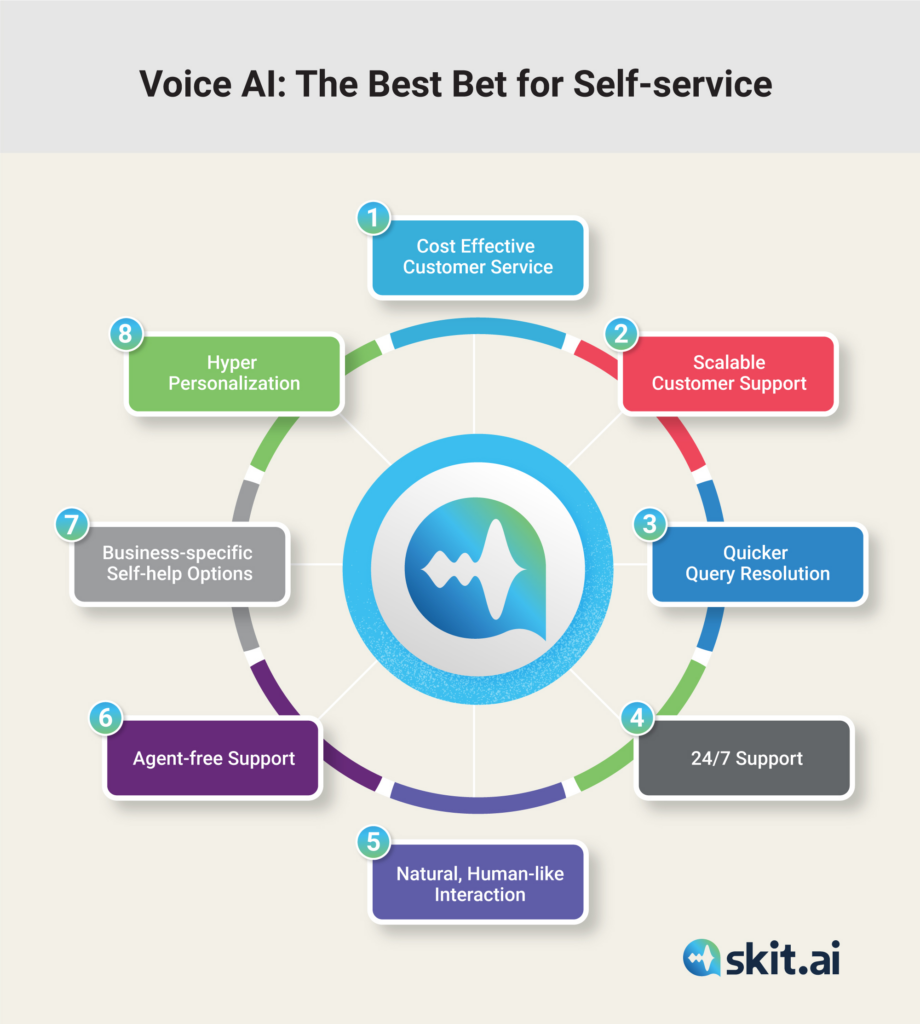Today, every CXO working in auto finance knows it takes just a few online searches and clicks to buy a vehicle. For an industry primarily focused on customer-centricity, auto finance companies are suddenly up against “seconds-to-minutes” worth of digital interactions to wow their customers for better engagement and retention.
Inflation in the U.S. is adding a new set of challenges, with rising interest rates, vehicle prices, loan delinquencies, and predatory competition, making the current landscape particularly complex.
Prospective car owners seek online financing options for the speed, convenience, and wealth of online information to make a decision. Their digital savviness intensifies the demand for fast-paced digital finance with seamless customer support. Auto finance companies must rethink every touchpoint and communication channel across the customer’s journey.
Ensuring customers stay satisfied throughout their auto lending journey is a complex task.
In this article, we’ll explain what Voice AI is and how it can add significant value to the customer experience (CX) in the auto finance industry. Skit.ai’s Voice AI solution can help auto finance companies automate various types of calls, starting with collection calls and payment reminders.
7 Auto Finance Use Cases with Voice AI for Better Customer Experience
- Welcome Calling & Onboarding: Our Digital Voice Agents plug into contact centers to handle Tier-1 calls that are mundane and repetitive. These intelligent voice bots are tailored to send automated welcome messages, assist customer onboarding, and share loan-related information like interest rates, loan eligibility, loan approval, and payment details.
- Payment Reminders: Auto loan providers can leverage Voice AI solution to set triggers for personalized, outbound payment reminder calls of any volume for loan payment, EMI dues, interest rate updates, and document submission.
- DPD 30-60 Collection: (DPD).Voice AI helps place thousands of automated, proactive, and timely calls concurrently without requiring human intervention or needing to scale human support teams. This is useful for auto finance collection cases involving consumers who have missed EMIs for 30 to 60 Days Past Due. The prime customer gets a grace period; late payment fees are waived, and credit scores will not be affected. These are the benefits that customers experiences which make ultimately result in better CX.
- Auto draft Signups: Auto draft is like enache. Prime customer who is of the age of 50 and above still pays with a cheque or visits the bank. For them, auto-pay setup is essential to avoid penalties. In turn, it contributes to the convenience essential in enhancing CX and increasing customer loyalty.
- On-call Payment Assist: Digital Voice Agents can provide prompt on-call payment support to consumers by automating responses for Tier-1 calls and transferring only complex calls to human agents. The analytics and data on consumers’ loan accounts and payment histories also help collectors to have better insights for answering various consumer queries and providing on-call payment assistance.
- After-Hour Business Services: Voice AI helps auto finance companies provide 24/7 live customer support services to answer consumers’ queries about payments, loans, due dates, and more at any time of the day. Especially useful for calls made after business hours and for handling simplistic queries, while the other issues, such as disputes and other issues, are captured and updated with relevant CTA.
11 Ways Voice AI Drives Up Customer Loyalty and Retention
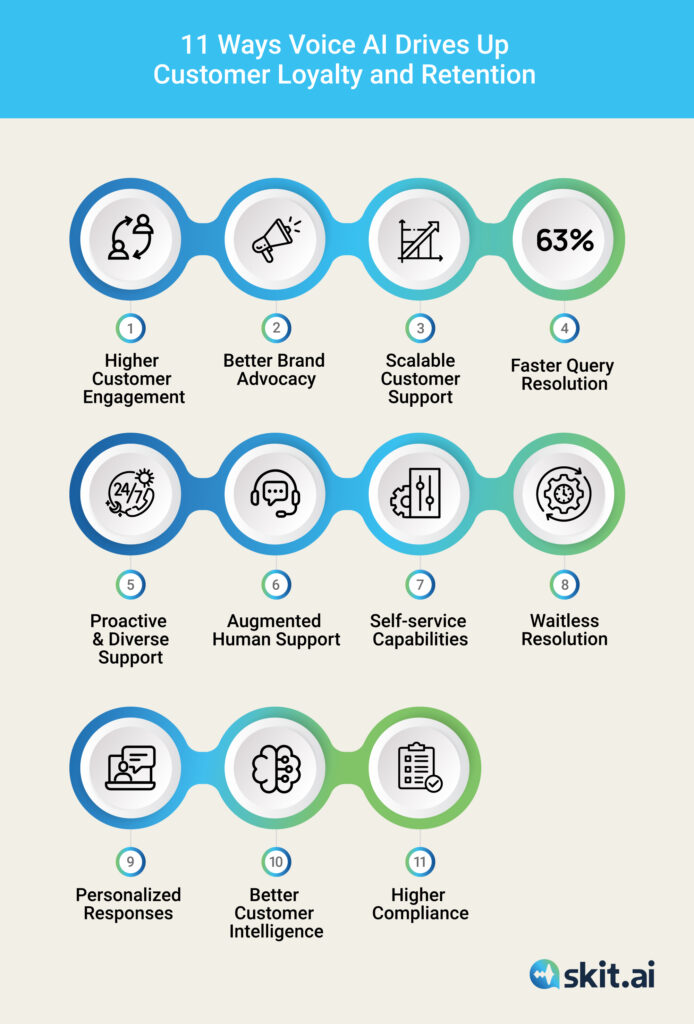
The critical aspect of Voice AI in auto finance is to help companies against common operational pitfalls that can lead to potential and existing consumers slipping away to their competitors. Our Augmented Voice Intelligence platform allows auto finance companies’ contact centers to augment their support teams to unlock the best of its live collectors and Digital Voice Agents to serve many use cases, delivering superior CX. These further translate to customer retention and loyalty in the following ways:
- Higher Customer Engagement: Digital Voice Agents call automation; up to 70% of calls help reach the right consumers at the right time and frequency. This helps auto finance companies supercharge their engagement rate with current customers and onboard potential customers.
- Better Brand Advocacy: As per the 2022 J.D. Power study report on Consumer Financing Satisfaction, existing customer relations are the low-hanging fruits for auto loan providers to leverage. Captive lenders reportedly outperform non-captive lenders with higher NPS. Voice AI helps engage with existing customers who are twice as likely to consider their current lender for their next vehicle purchase.
- Scalable Customer Support: Reminders at the right time and to the right person, with 1000s of concurrent calls, helps auto lending companies engage with thousands of callers across loan portfolios at a fraction of operational costs.
- 63% Faster Customer Query Resolution: Companies that implemented Voice AI in their contact centers were able to reduce 63 percent of the query processing time for better customer retention and satisfaction at 67 percent, as per a study by Ecosytm.
- Proactive & Diverse Support: Voice AI is customized for various functions and call automation capabilities to help the customer support teams to cater to diverse customer queries like payment collections, customer signups, document verification, loan approval, and purchases.
- Augmented Human Support: By leveraging call automation and intelligent voice bots’ ability to provide prompt resolutions to tier-1 calls, auto finance companies can empower their contact center agent teams to save time and resources, be productive, and focus on high-value tasks that need actual voice conversations with customers in times of their need, translating to better CX.
- Self-service Capabilities: Voice AI’s 24/7 availability with prompt response to queries gives customers control over debt repayment or auto finance process.
- Waitless Resolution: Digital Voice agents quickly disseminate information on products or loans, reducing wait time and elevating CX.
- Personalized Responses: By delivering contextually accurate information specific to the use case, Voice AI ensures the responses are hyper-personalized with consistent call quality.
- Better Customer Intelligence: Auto finance companies can make the customers feel heard by unlocking a treasure trove of customer insights from data and robust analytics dashboards to improve the overall customer experience and call quality.
- Higher Compliance: Collectors in the auto finance industry must be aware of core federal laws relating to auto loans and consumer communication, including HIPPA, FDCPA, FCRA, TCPA, and more. Voice AI’s algorithms are trained to adhere to consumers’ laws on privacy and compliance best practices which are critical for building a positive brand image.
Voice AI Represents a Breakthrough in Auto Finance
The automotive industry is slowly evolving to build excellent customer journeys against the digital boom, rising consumer demands, and data ubiquity. A look into the future shows no signs of slow down in consumers’ expectations for digital and phygital experiences in auto retail and finance. Voice AI is poised to make contactless car buying a reality in the era of driverless cars!
To learn more about how Voice AI and Digital Voice Agents help reimagine customer support and collection in auto finance, schedule a call with one of our experts or use the chat tool below.


